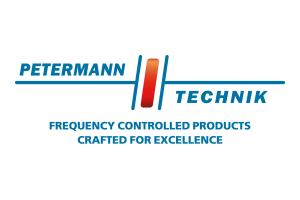Software for mobile networks
Open RAN, SDN and Virtualization
Future mobile networks will be more dominated by software, to be controlled and equipped with new functions. In this way, network operators want to gain more flexibility – also in the purchase of components. But integration into systems will become more complex, says Gil Hellmann of Wind River.
Markt & Technik: Wind River's Linux operating system is already being used in mobile base stations for UMTS and LTE. Can the requirements for Open RAN also be met with it? Are there any adaptations that were/are necessary?
Gil Hellmann: First, it’s important to examine the definition of open RAN. Open RAN is a term for industry-wide standards for RAN interfaces that support interoperation between vendors' equipment. The main goal for using open RAN is to have an interoperability standard for RAN elements.
Virtualization and cloud are concepts that are very complementary to open RAN. Wind River provides a cloud platform technology, from our Wind River Studio offering, designed to run the virtualized element of the radio access network. Our cloud platform technology is based on the open source StarlingX. In fact, the world’s first desegregated (meaning open RAN and virtualized) 5G commercial network accomplished by Verizon is running on Wind River’s cloud platform technology. Vodafone has also recently selected Wind River’s cloud platform technology as well.
Where do you see the advantages of Open RAN? What are the disadvantages of Open RAN?
Regarding advantages, open RAN promotes an open architecture to provide the agility to introduce a mix of vendors/ecosystem diversity, to introduce new services, to scale up your edge cloud to add new services 5G network. Primary use cases will be to enable new use cases that require high performance and ultra low latency. For example ultra reliable low latency communication are demands for applications for the far edge (Industry 4.0, augmented reality, etc.). It will allow the service provider to have that agility to introduce those use cases and services when they need and how they need from a variety of vendors. It also helps to bring about operational efficiencies that are possible by taking cloud-based or disaggregated approaches.

Regarding disadvantages, let’s consider the complexities that come with the move towards disaggregation and the allowance of a mix and match approach. In order to be successful, you’ll need strong system integration capabilities, whether the system integration is done by the operator or by a third party system integrator. When it comes to system integration, clearly defined the requirements will be needed. When using a variety of vendors, it will be important to make sure that the different vendors comply to the requirements and thoroughly test things before the deployment. If you do not have a system integrator that does not have the right expertise, you’re introducing a signification amount of risk to the project.
How do you see Open RAN fitting into the trend towards Software Defined Networks and the virtualization of networks?
Open RAN is all about mixing and matching, open interfaces/interoperability of different vendors across the ecosystem. When you combine this approach with a virtualized, cloud approach, things become scalable and highly configurable; it becomes software-defined. Virtualization and software defined approaches, while not inherently part of the definition of open RAN, are complementary to open RAN. Together these combined approaches will accelerate innovation.
Wind River is involved in the O-RAN Alliance. In which committees and on which projects are Wind River experts active?
Within the O-RAN Alliance, we are key contributors to the Cloudification and Orchestration specification groups. We’re also in the MVPC (Minimum Viable Program Committee) which has a representative from each one of the working groups.
Additionally, outside of the O-RAN Alliance, we are in the O-RAN SC (O-RAN software community) under the Linux Foundation. This open source project goal is to provide an open source implementation of the O-RAN Alliance specification. Under the O-RAN SC, there are multiple projects like the INF (Infrastructure) project. We are a key contributor to the INF project. Wind River is also a member of the technical oversight committee for the O-RAN SC.
What are Wind River's goals in becoming involved in the O-RAN Alliance?
We strive to be the leading cloud platform for disaggregated open 5G vRAN. As mentioned, with our work with Verizon, Wind River’s cloud platform technology from our Wind River Studio offering was the first in the world to provide this. We want to take those learnings and contribute our expertise to help advance the industry.





